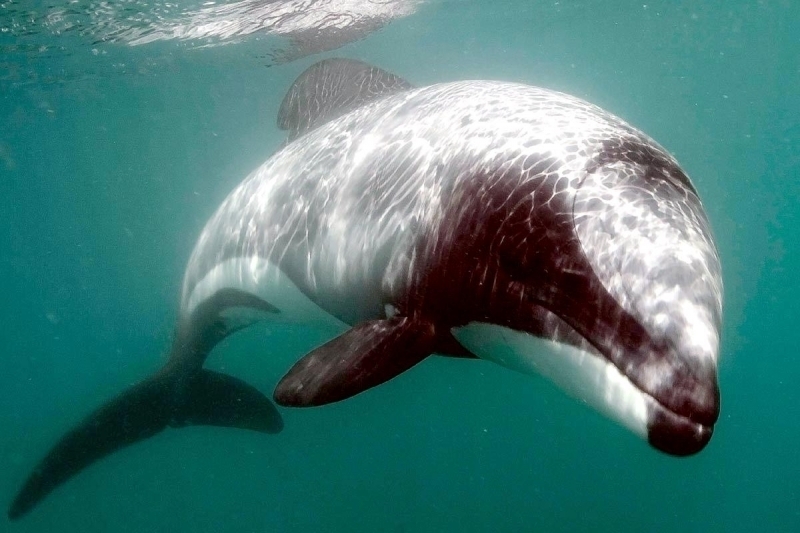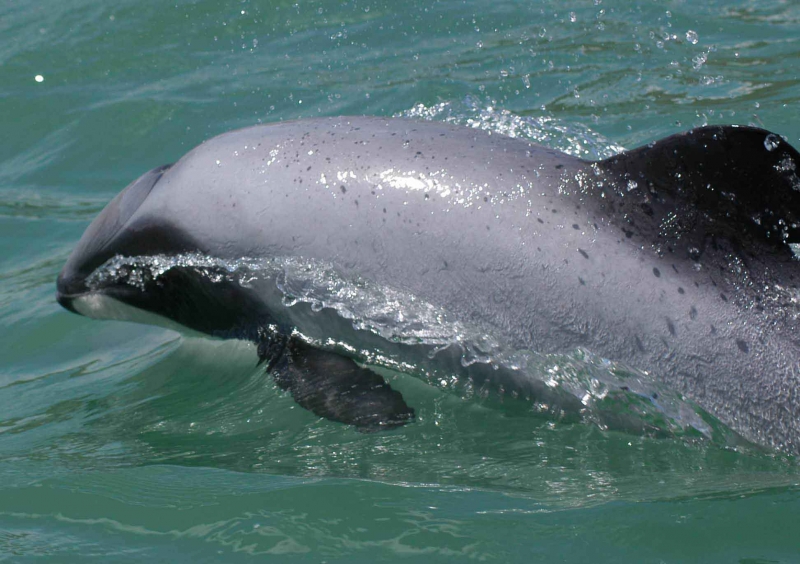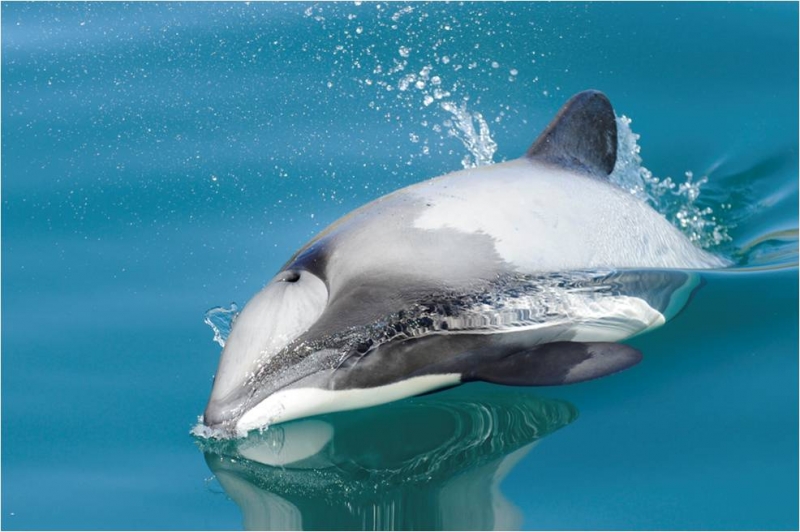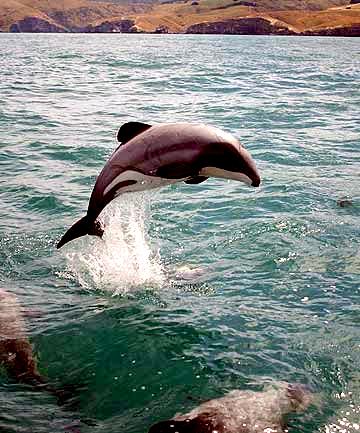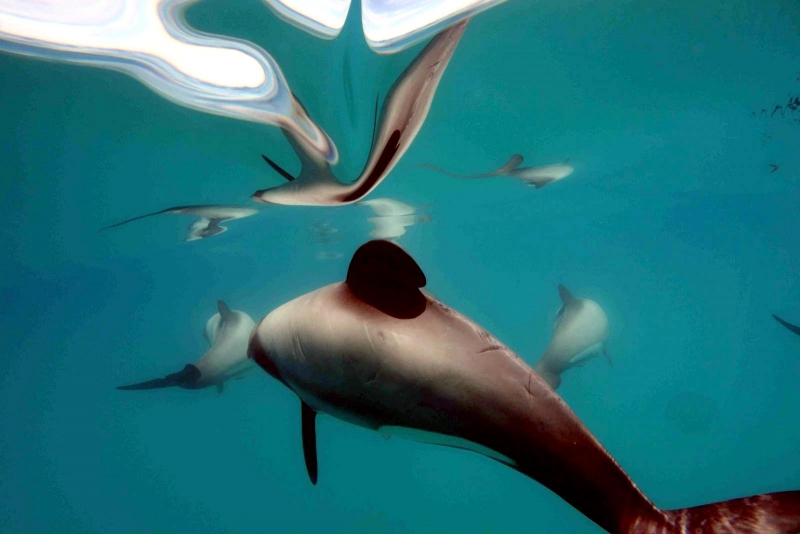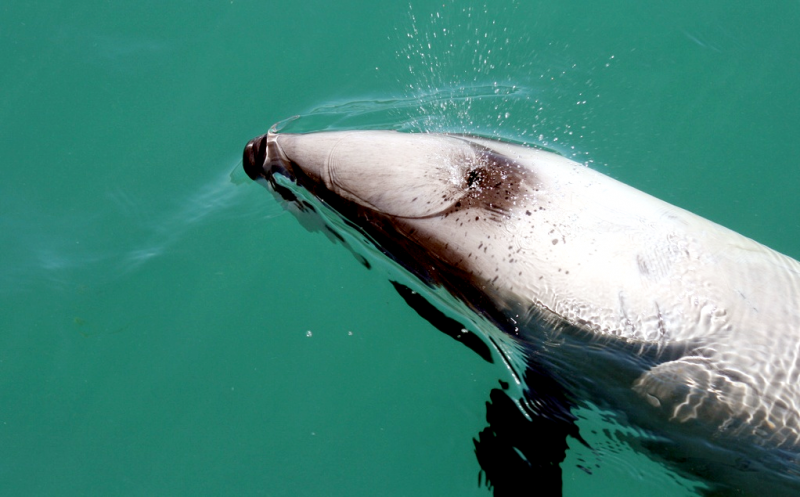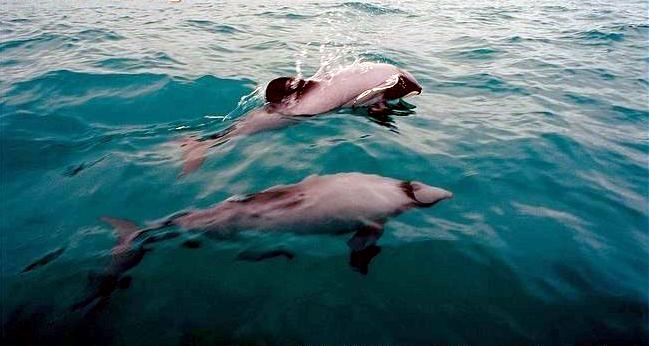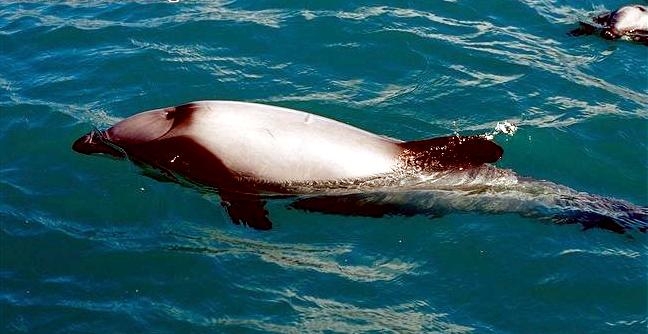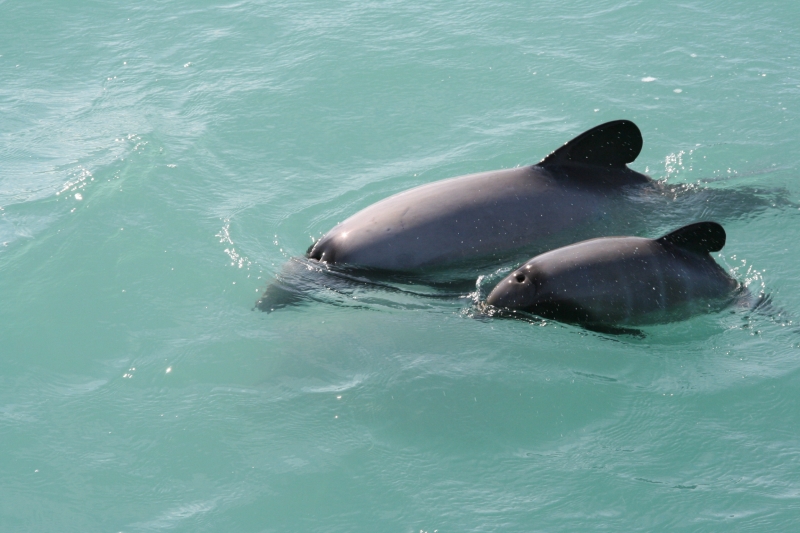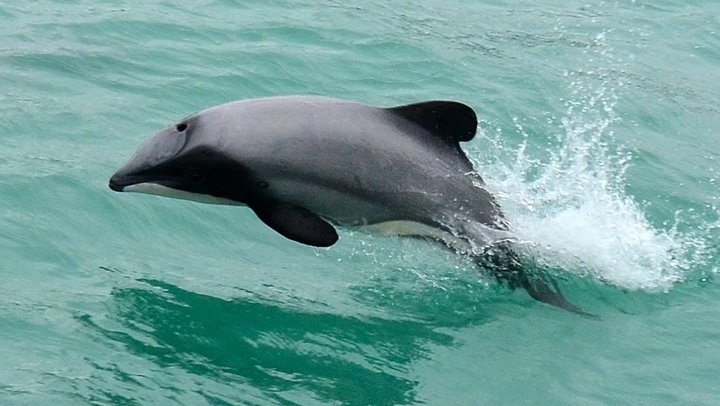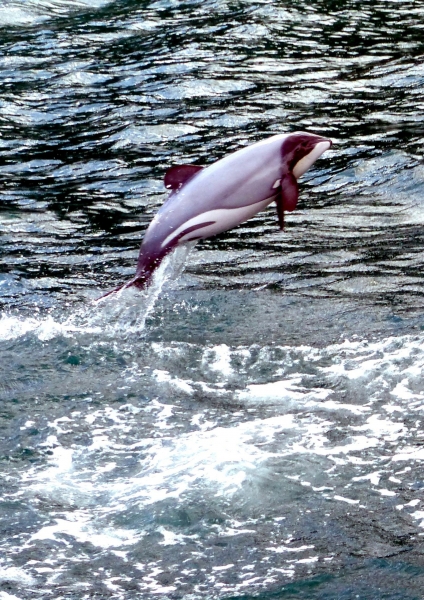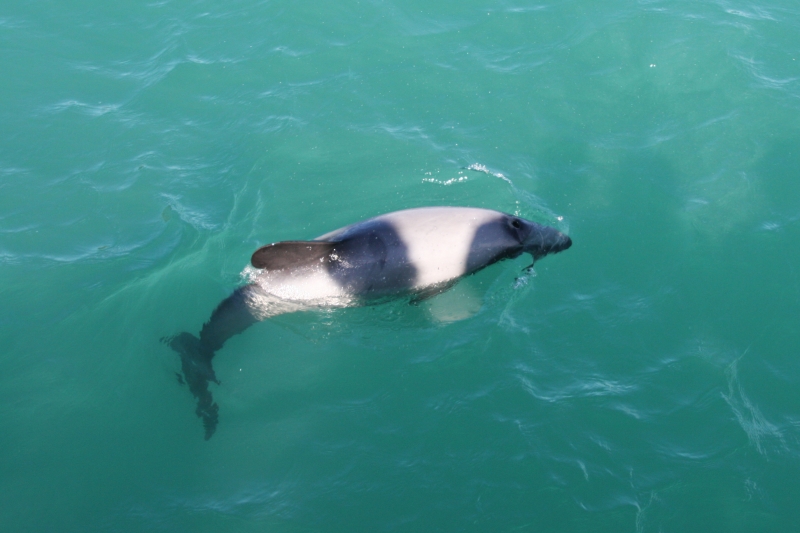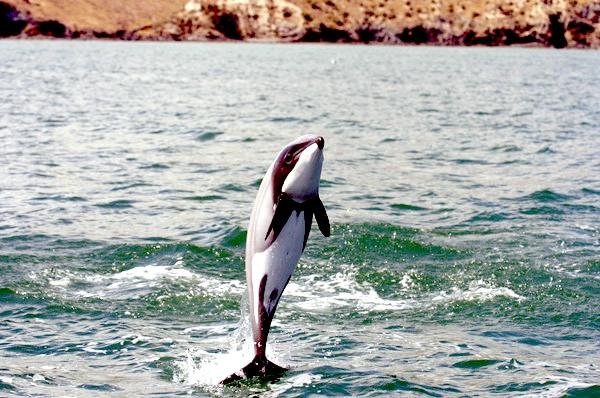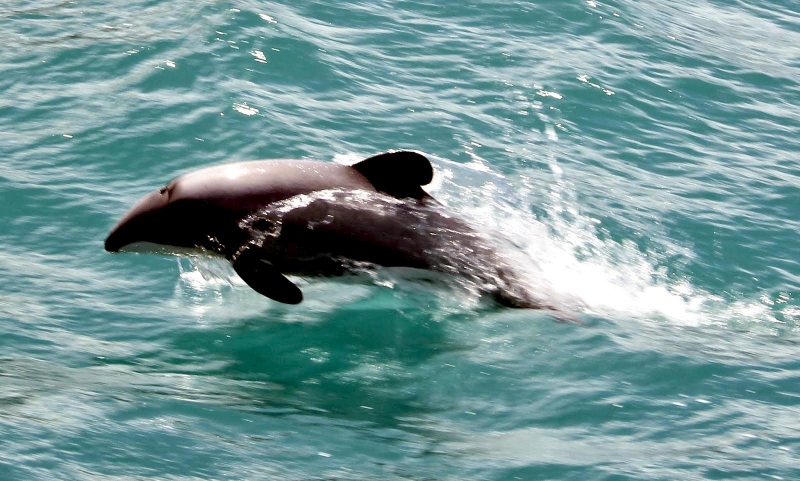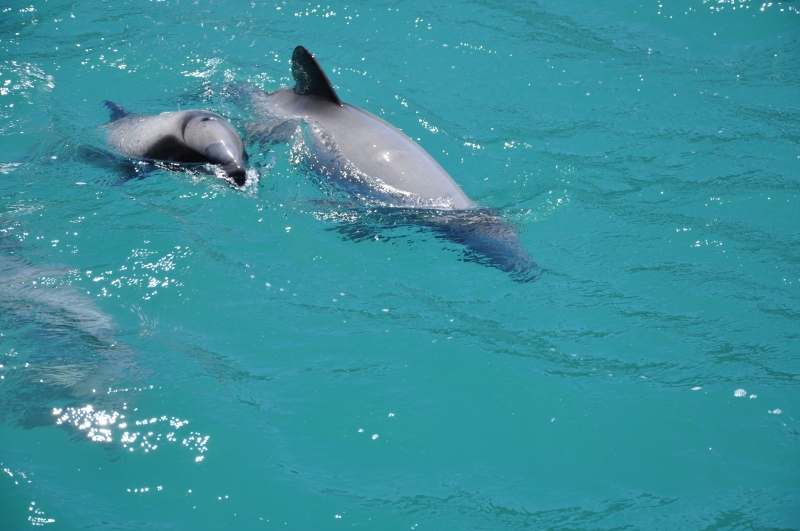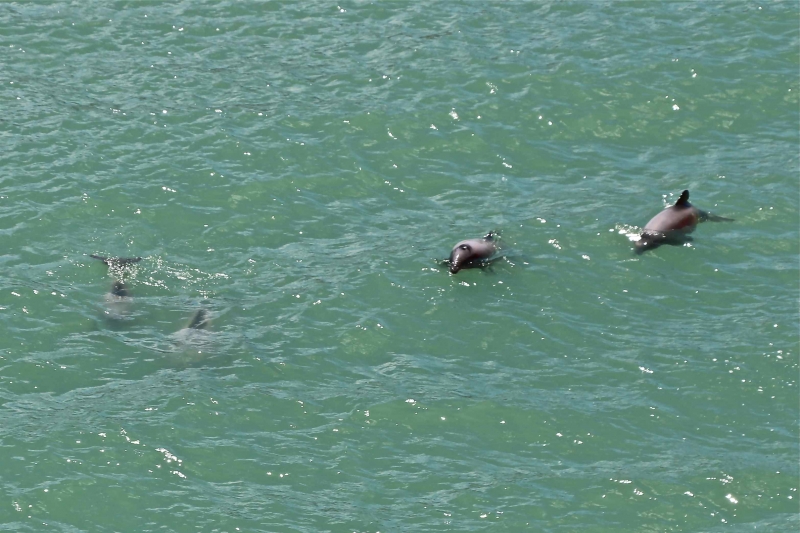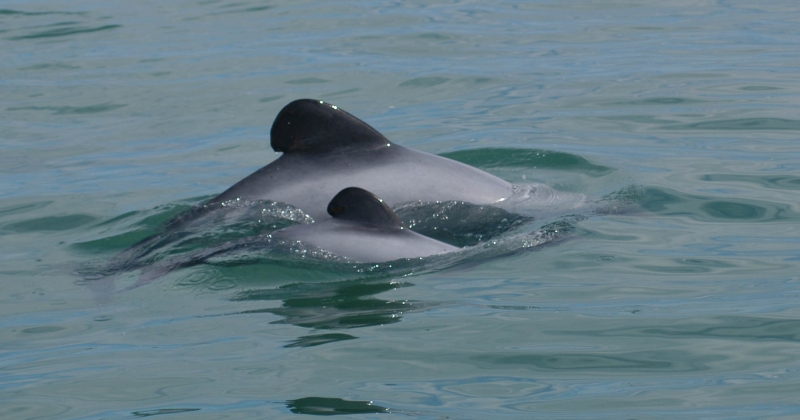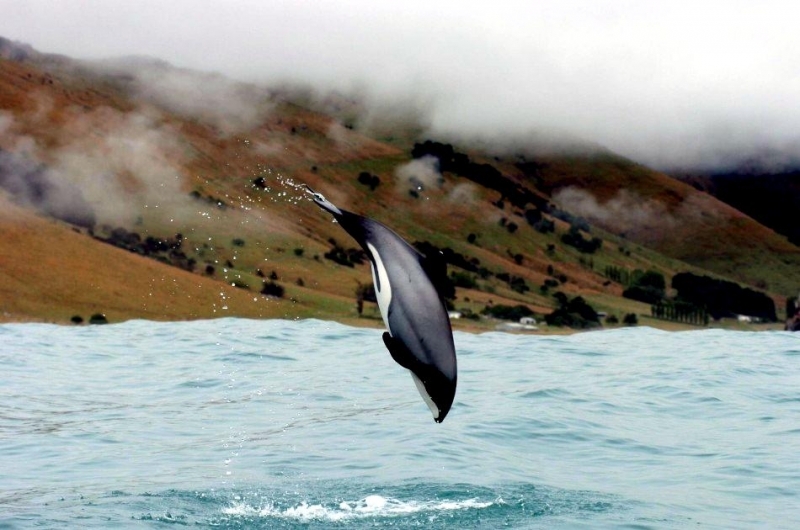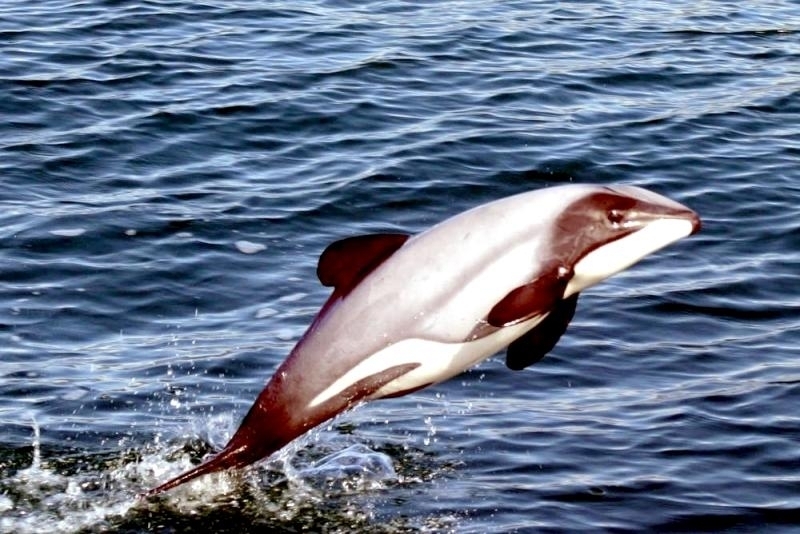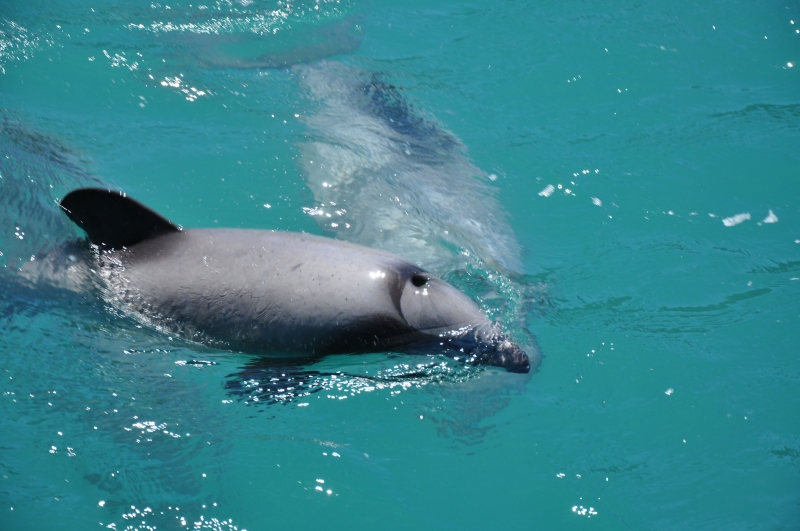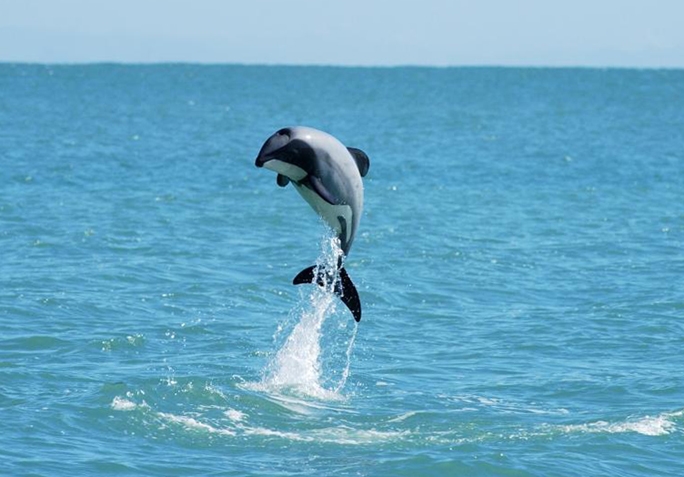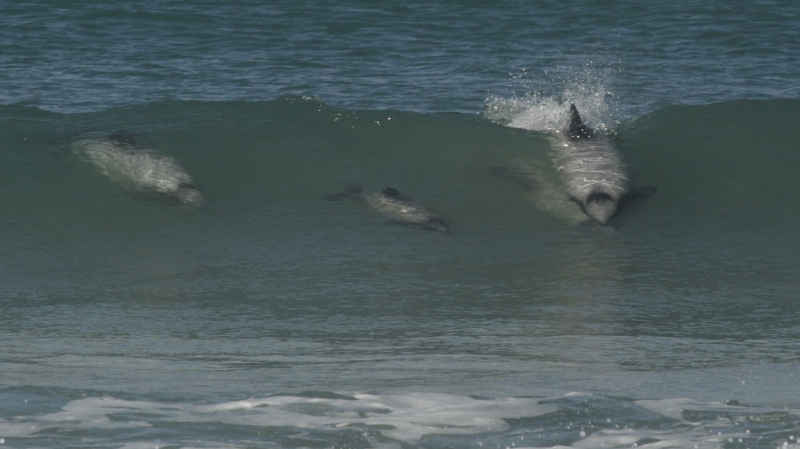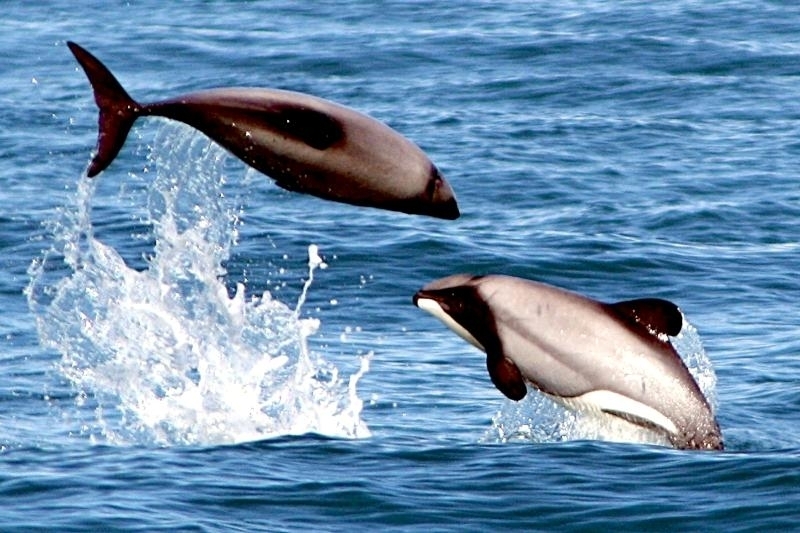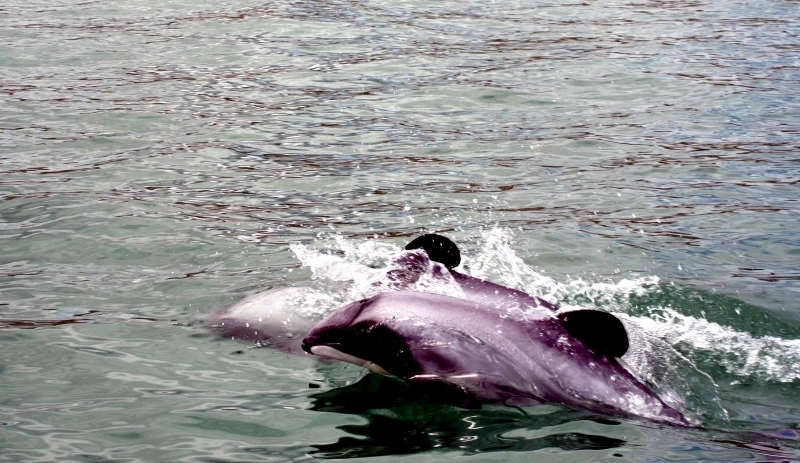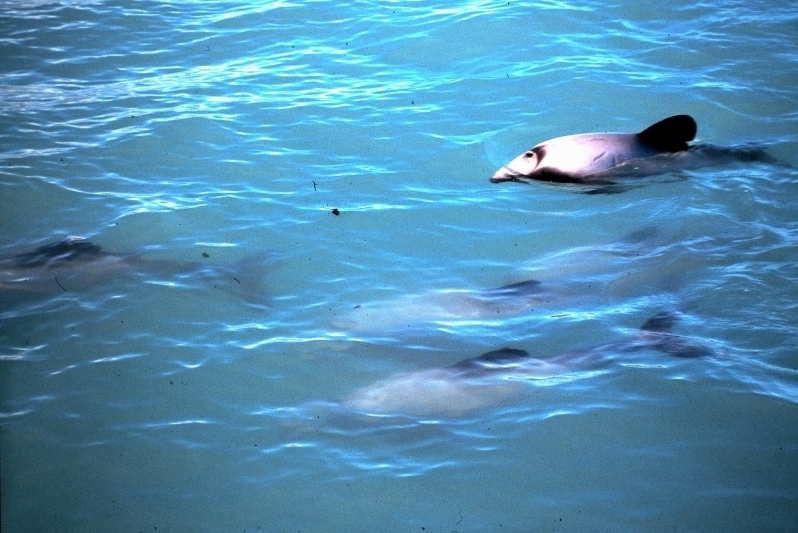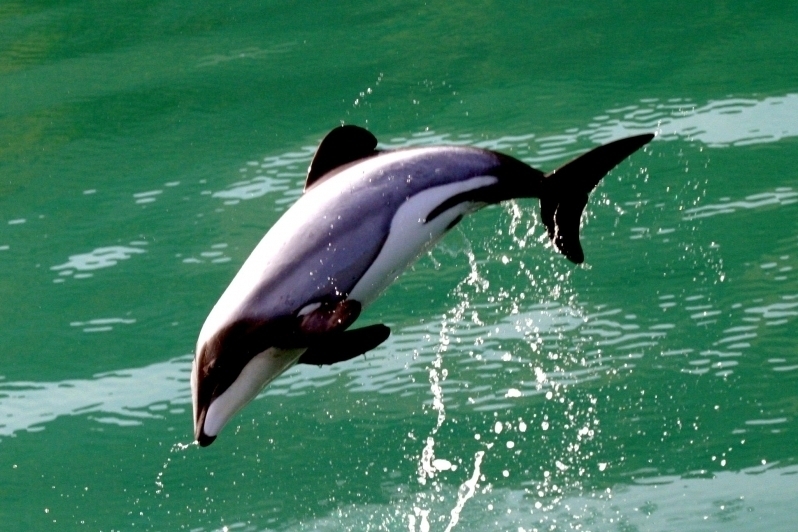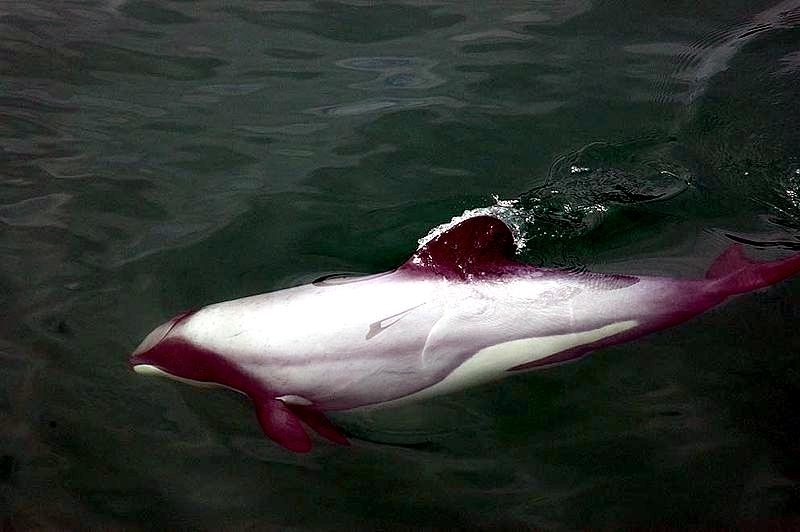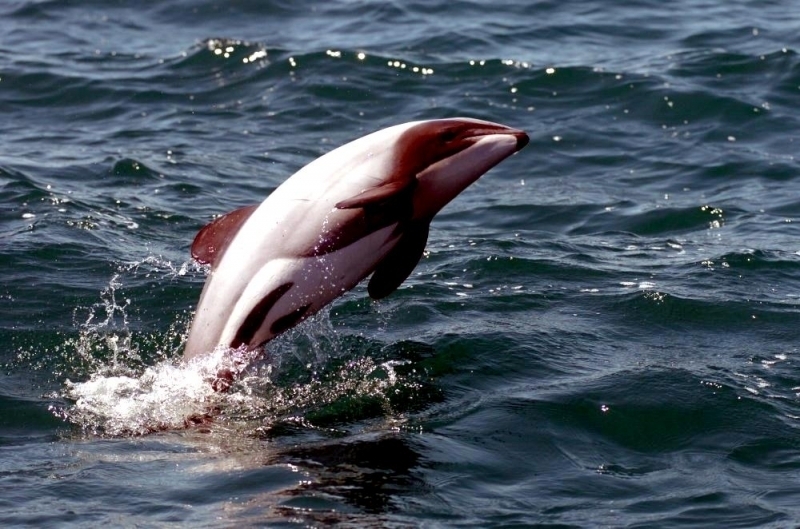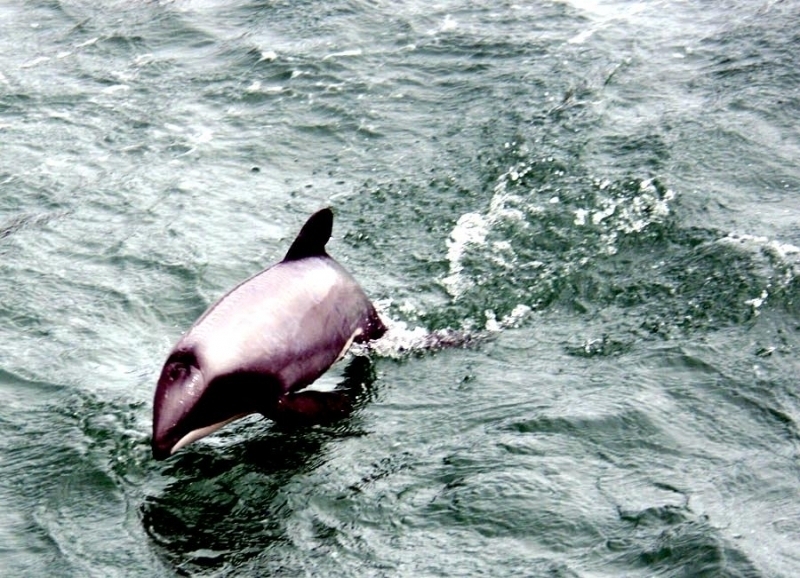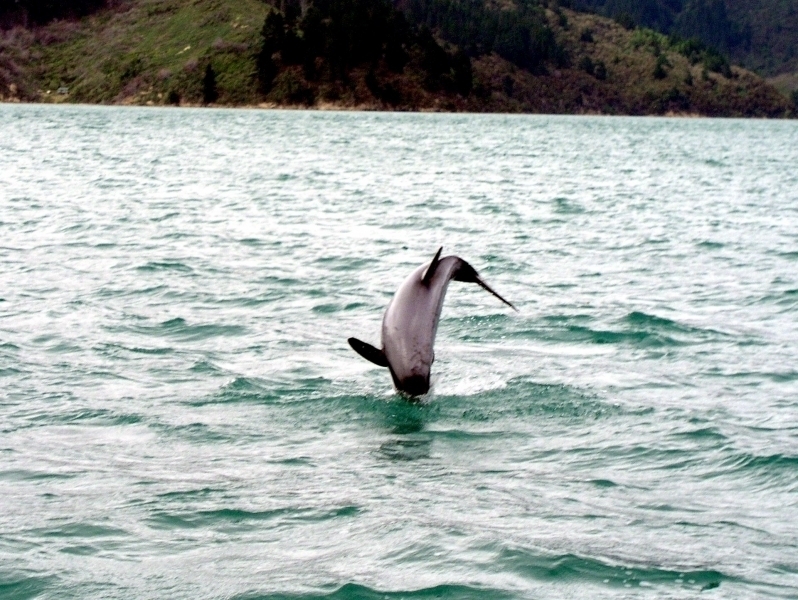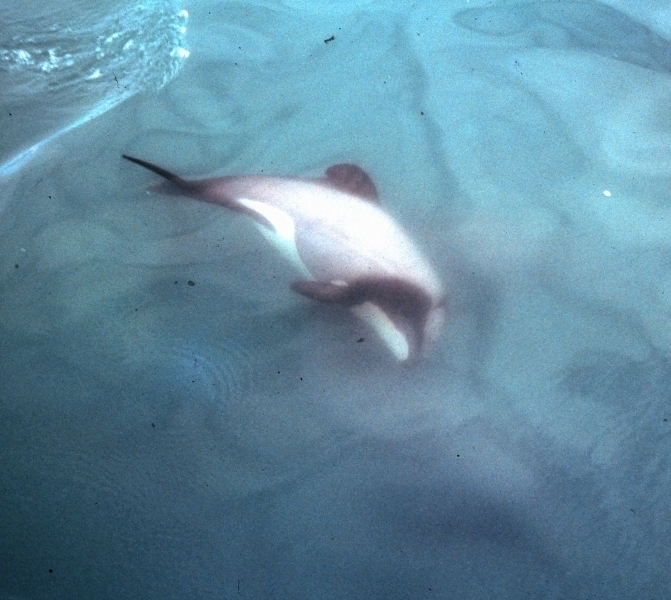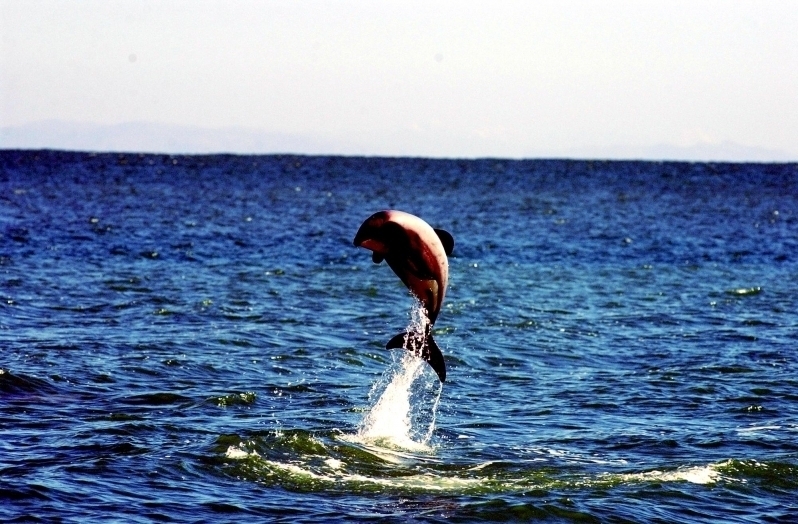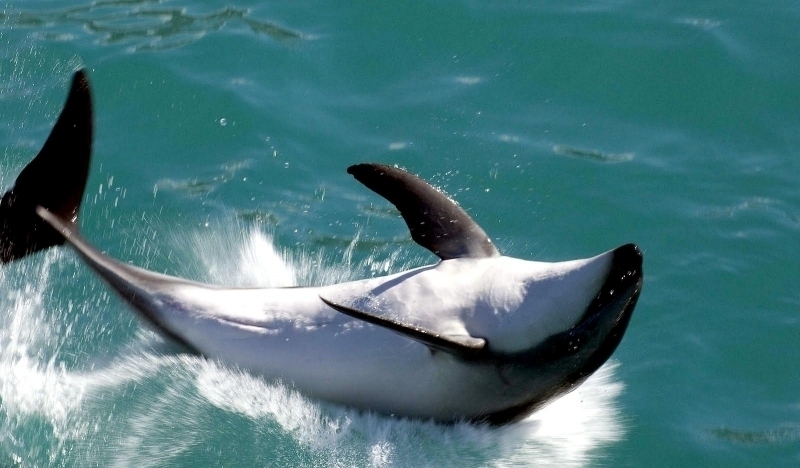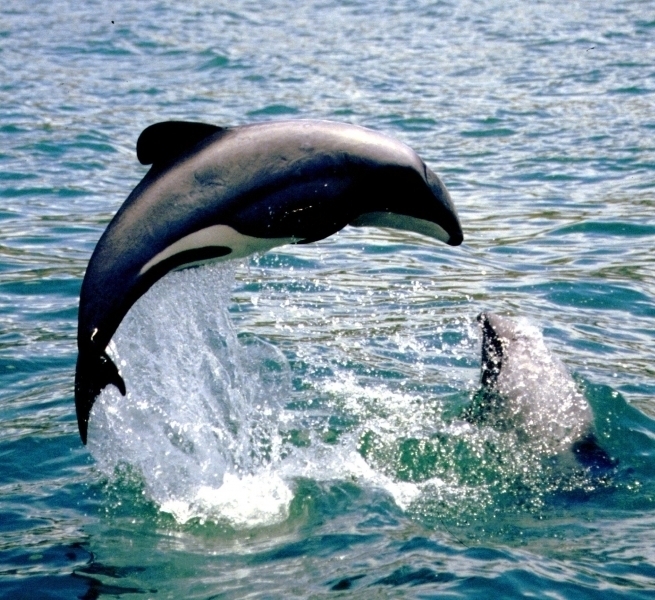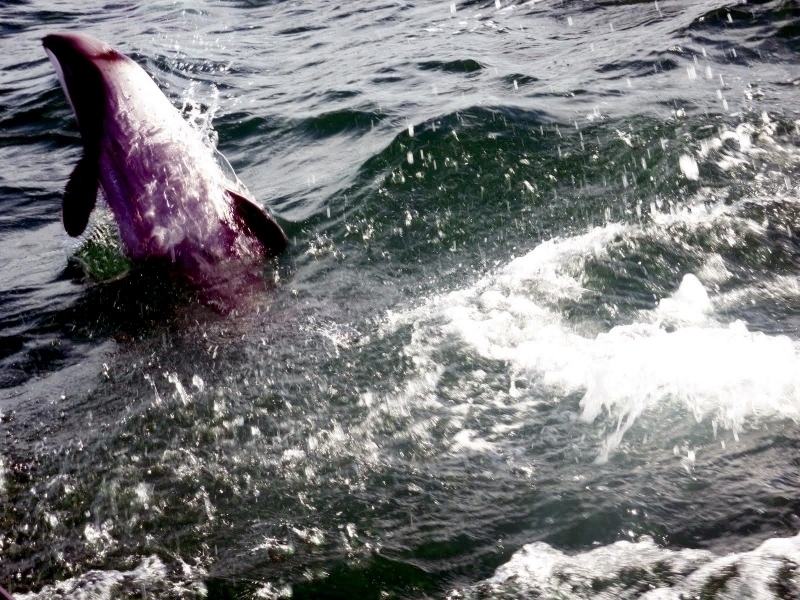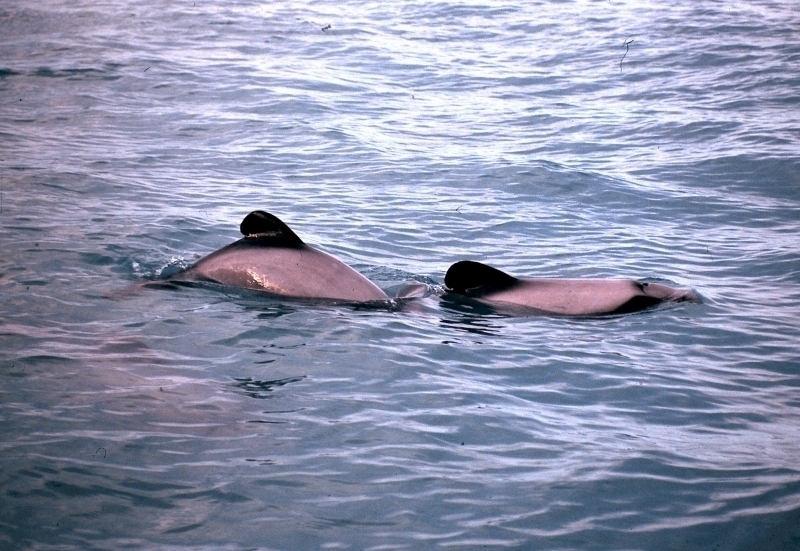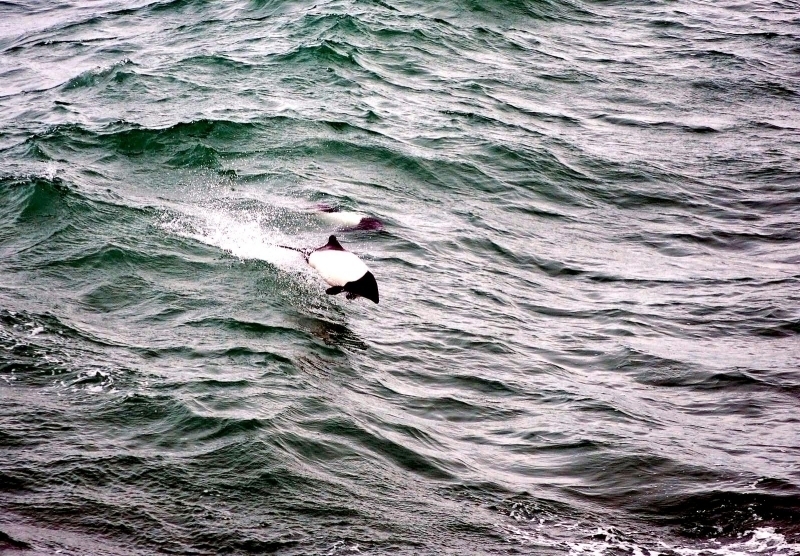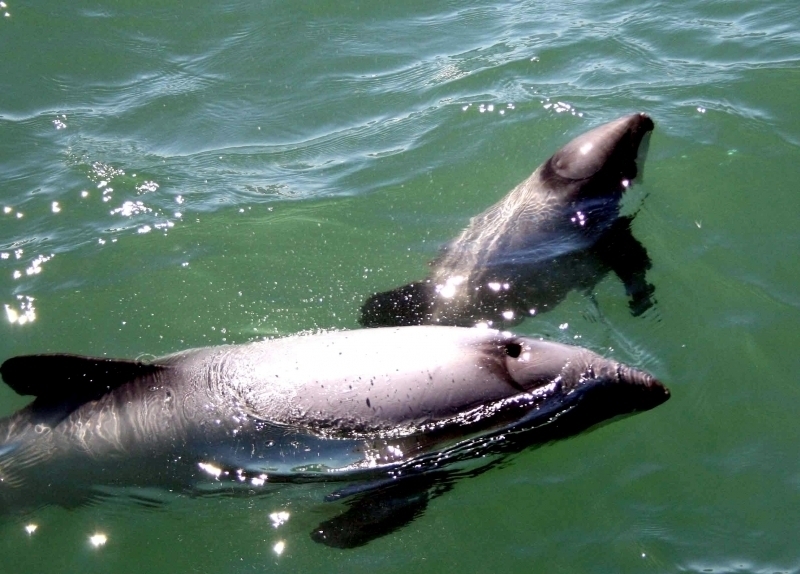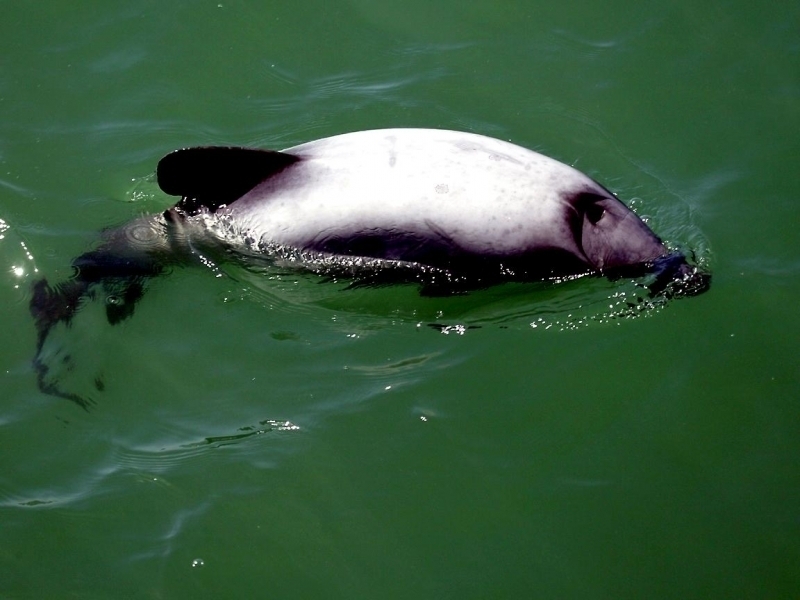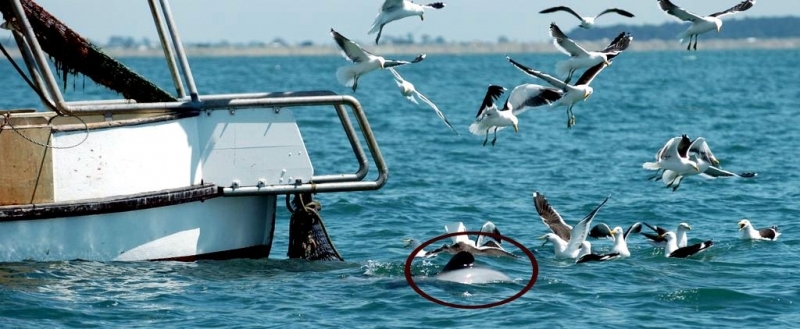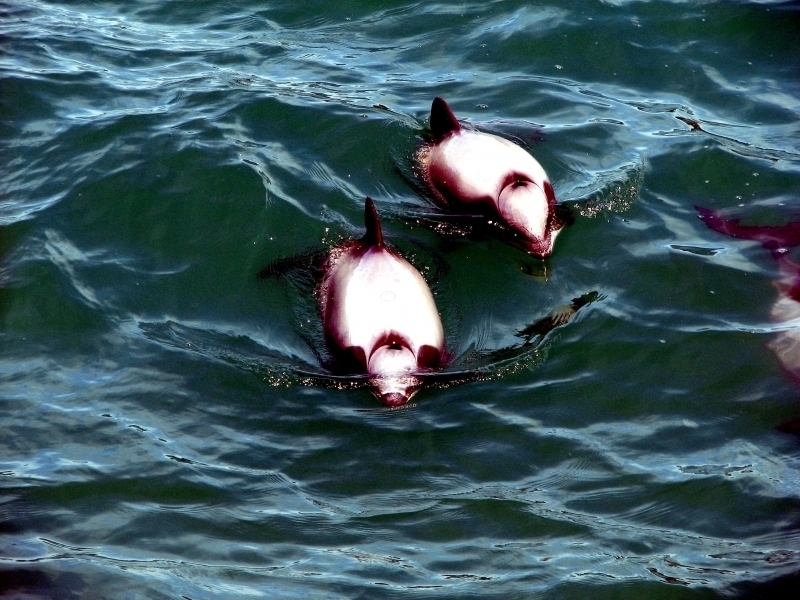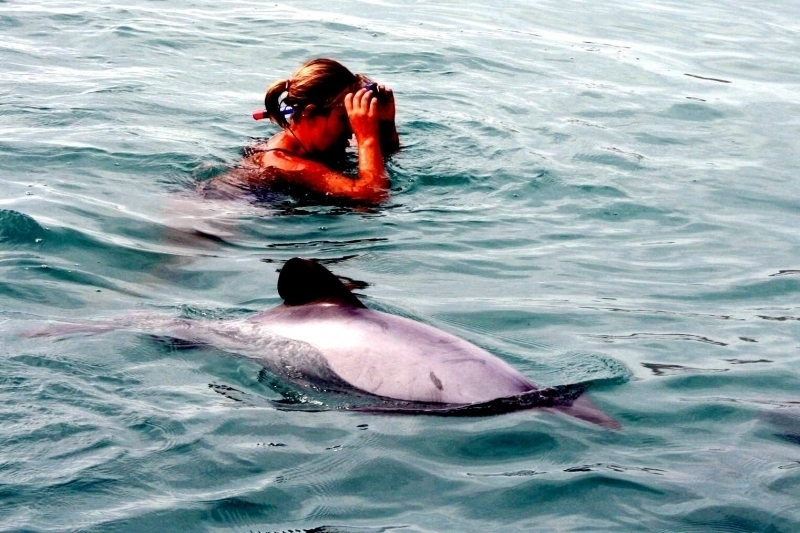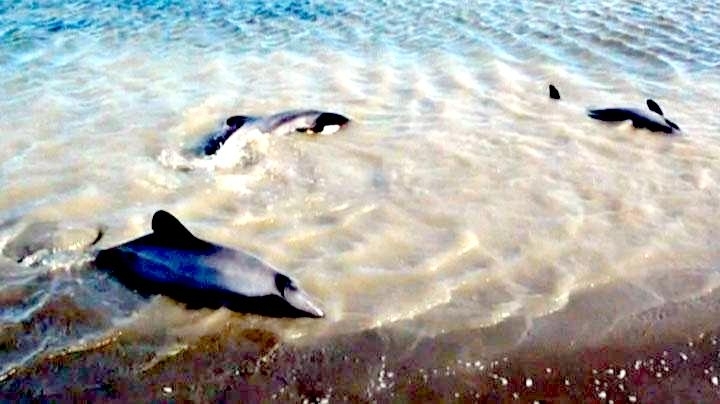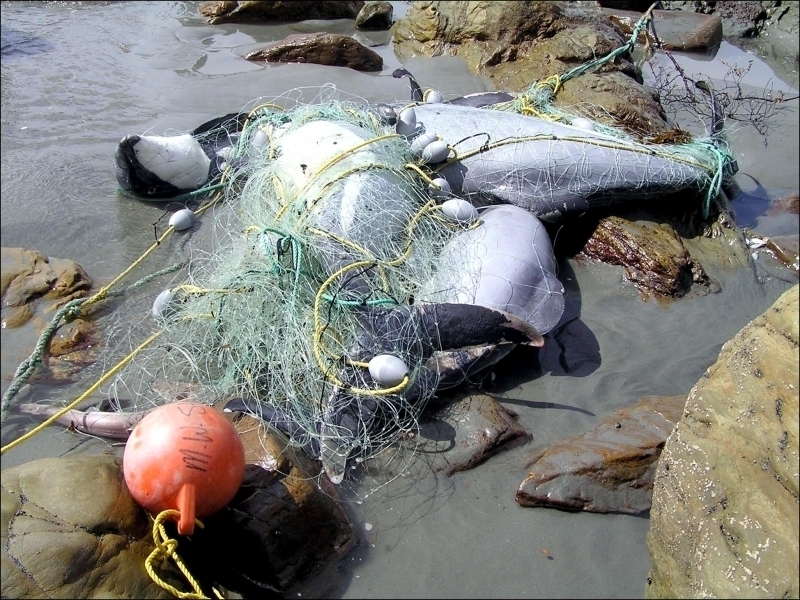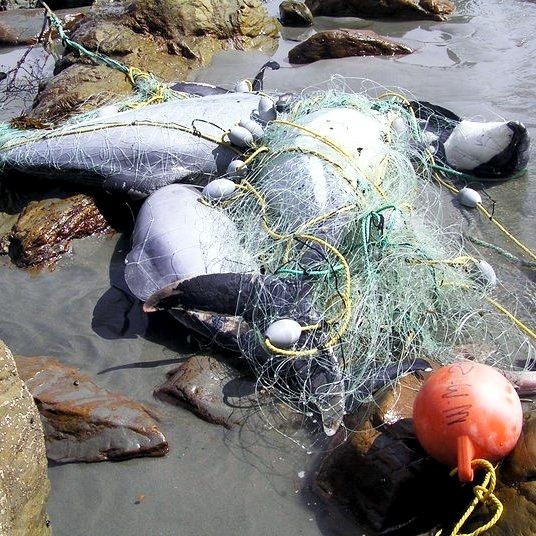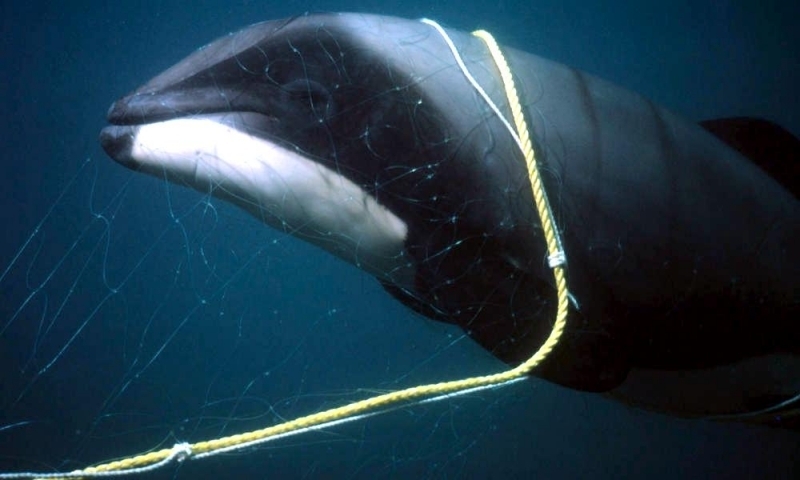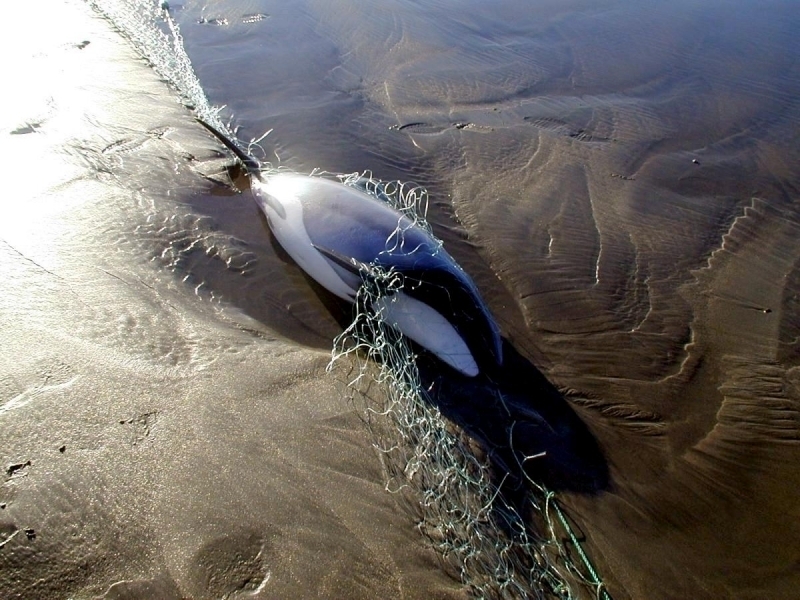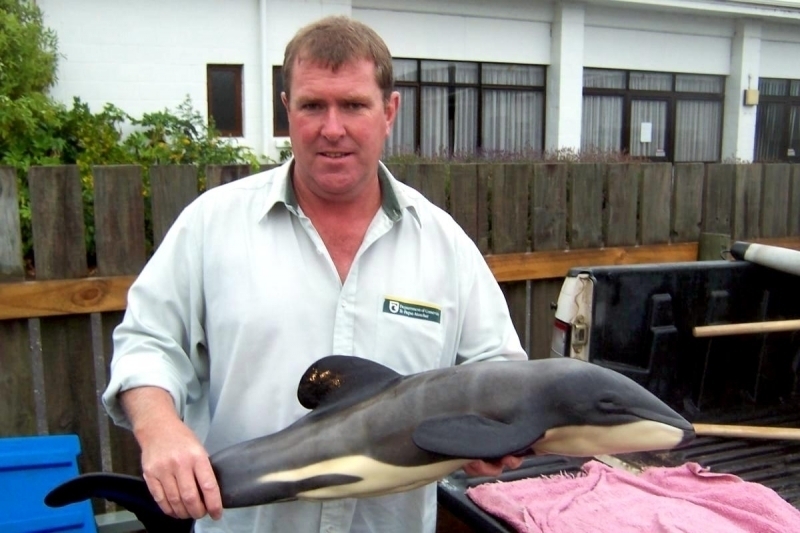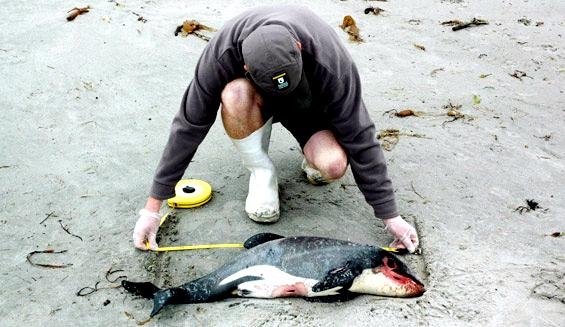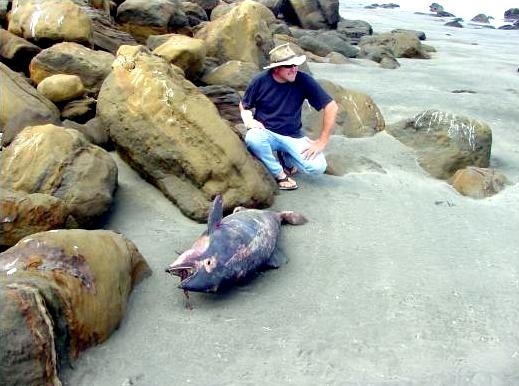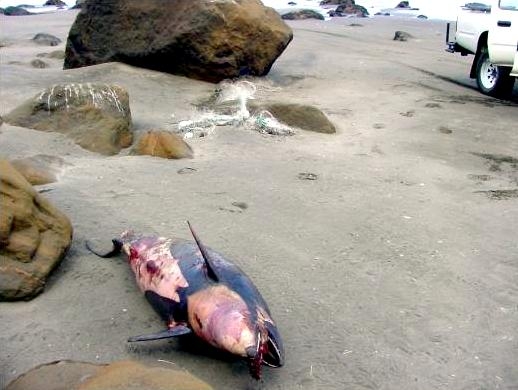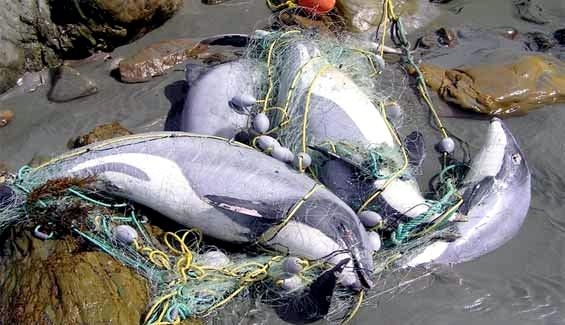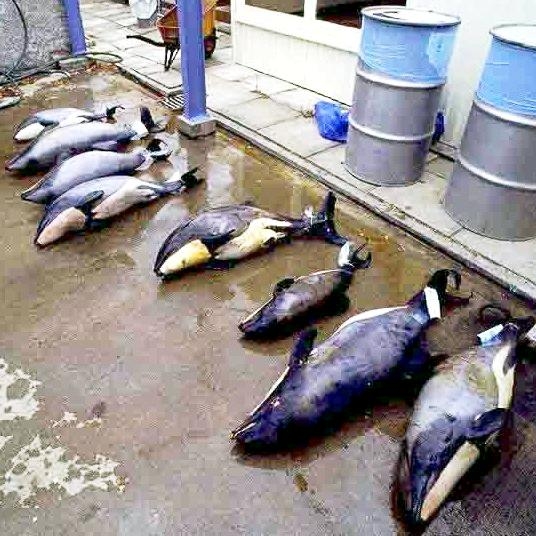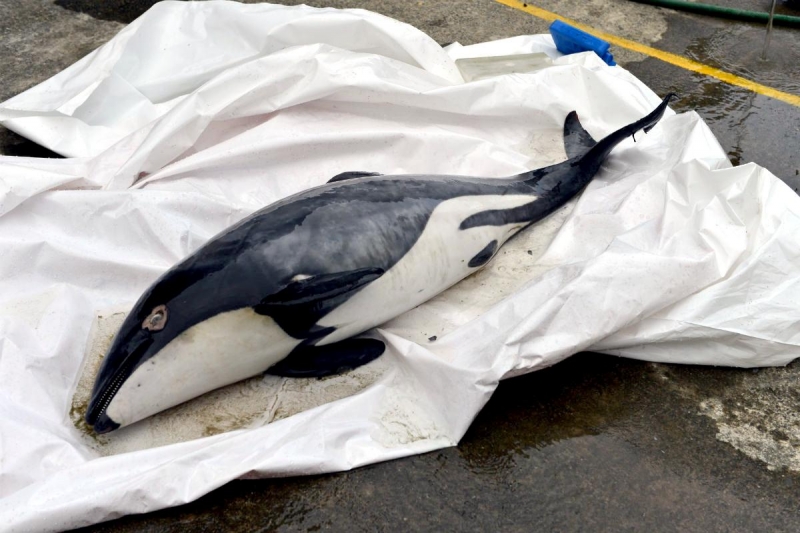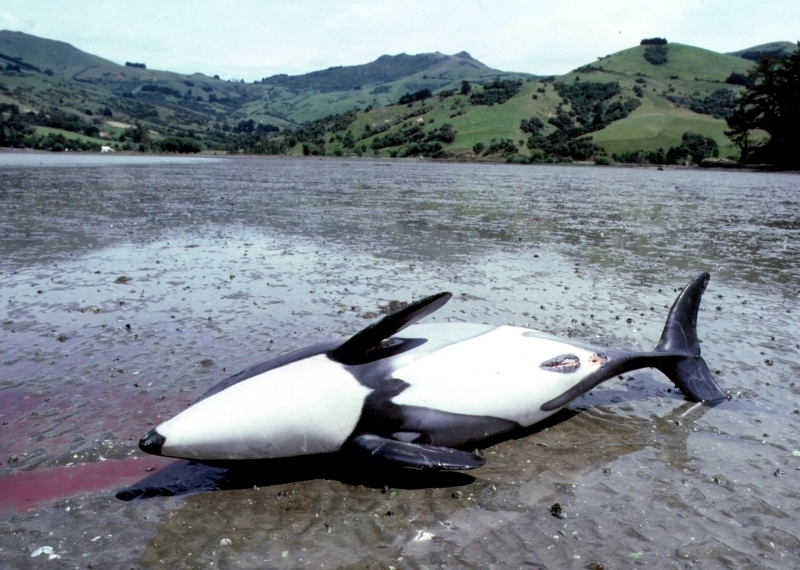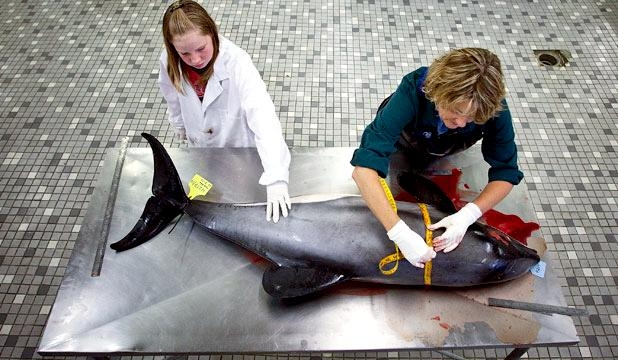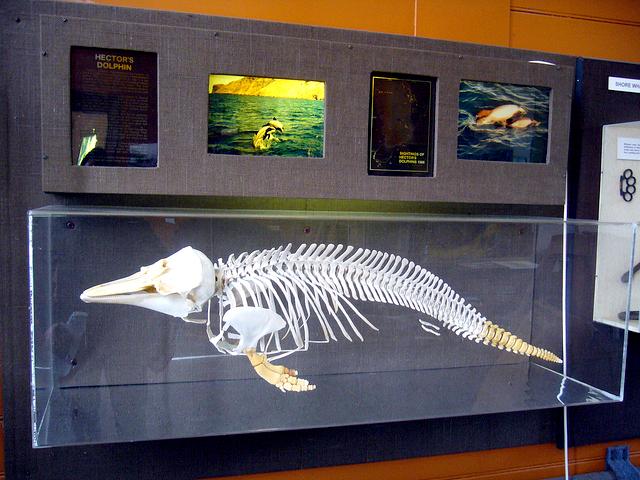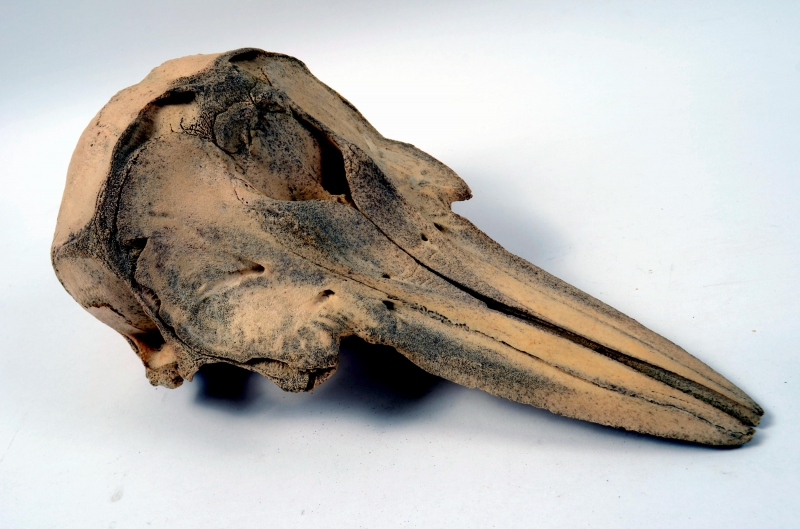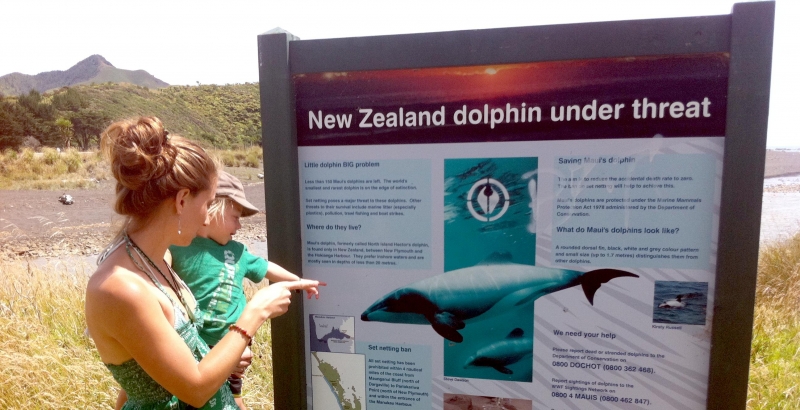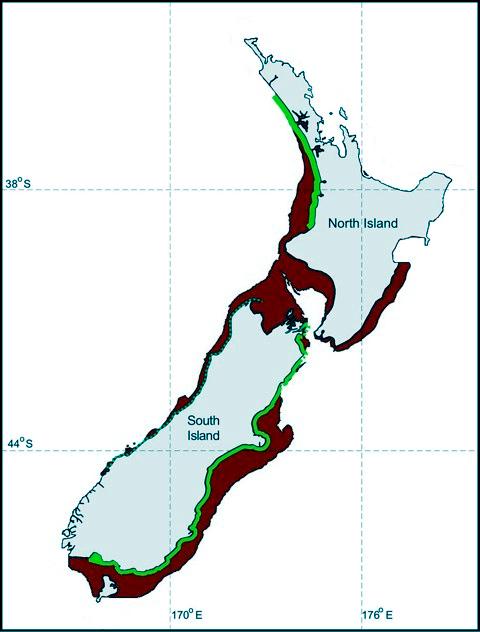“Cephalorhynchus hectori”
The rarest of all dolphins in the world is the Hector’s Dolphin. The name of this species is for Sir James Hector, a scientist from New Zealand who was first to really examine them. There is still plenty we don’t known about them. The body of this dolphin is torpedo shaped and they have a short body that is very stocky. It becomes more narrow as you go further back on the body. Hector’s Dolphins don’t have a beak-like other species of dolphins. They are light gray on the back and the sides and white or cream on the belly. They also feature a dark stripe of gray along the middle of the body. There is a black mark that goes from the back of the snout, around the eye and to the flipper. What may surprise you is that the females are a bit longer than the males. They tend to be about the same though when it comes to their weight. They measure from 3.5 to 4.5 feet long and can weigh up to 110 pounds. The overall size & weight of them can also be dependent on where they reside. The only known location of the Hector’s Dolphin is around the coastal waters of New Zealand’s North & South Islands. It is believed that there are 4 populations of them that are separated by geographic locations. They also mate only within that particular population. The smallest such population of this species has about 111 members and it is found between Dargaville and New Plymouth on western coast of New Zealand’s North Island.
Hector’s Dolphins tend to live in water that is up to 300 feet deep. They are usually not going to be more than half a mile or so from the shoreline. During certain times of the year they are right at the shore line due to changes in the location of their primary food sources. As is the case with other dolphins, Hector’s Dolphins live in groups that are very social known as pods. They create very strong bonds within that pod and there are plenty of subgroups and various relationships that take place. The complexity of it is very interesting to observe. The pods may have about 8 core members in it. However, others may come and go for various periods of time. They can also join up with other pods to make a larger unit. The fact that these smaller pods live so close to each other may indicate that they are really subgroups of a larger overall pod. Hector’s Dolphins can also be very aggressive to each other from time to time. They may take part in biting or blowing bubbles at each other. Activities such as chasing and tail splashing may be for fun or as a warning to keep some distance. Hector’s Dolphins are known to be slower at swimming than other species of dolphins. They can dive for a period of time up to 3 minutes before they have to surface for air. Clicking is frequently used by them for communication. This is the only species of dolphin that won’t use whistling sounds as a form of communication. Experts aren’t sure why the Hector’s Dolphin does not engage in such a behavior. The use of echolocation is very dominant for them to find their foods sources. Primarily, they will dine on various fish and squid. They will follow the fish where they move for spawning and that is when you will see the Hector’s Dolphin closer to the shorelines. Even though they can dive for up to 3 minutes, they usually only do so for about 1.5 minutes at a time. During that span of time, they are able to get a substantial amount of food.
Females take part in mating when they are from 7 to 9 years of age. For males, it ranges from 5 to 9 years. When a pair is going to mate, Hector’s Dolphins spend time with courtship rituals. This can include chasing, leaping, displaying the belly and touching. A pair will also move through the water in very close proximity to each other. It takes from 10 to 12 months after mating for the calf to arrive, tail first. The young Hector’s Dolphins are born either in the later part of spring or the early summer. The young dolphin forms a very close bond with their mother and they will be fully weaned about 2 years of age. The development stage of a Hector’s Dolphin will often play a role in where it goes in the pod. Sometimes they will be with juveniles, other times with breeding populations and then at times with non-breeding populations. One of the concerns for this species of dolphin is their slow rate of reproduction. The females will have a calf once every 2 to 4 years and won’t mate until the young calf they are caring for is completely weaned and taking care of its own needs. The average lifespan in the wild is from 20 to 25 years. The overall population of Hector’s Dolphins is estimated to be about 7,400 and are classified as a species that is vulnerable at this time. They were once widely hunted to be used as fishing bait but that is no longer allowed. Chemicals and other types of pollution do continue to be common threats for them.
